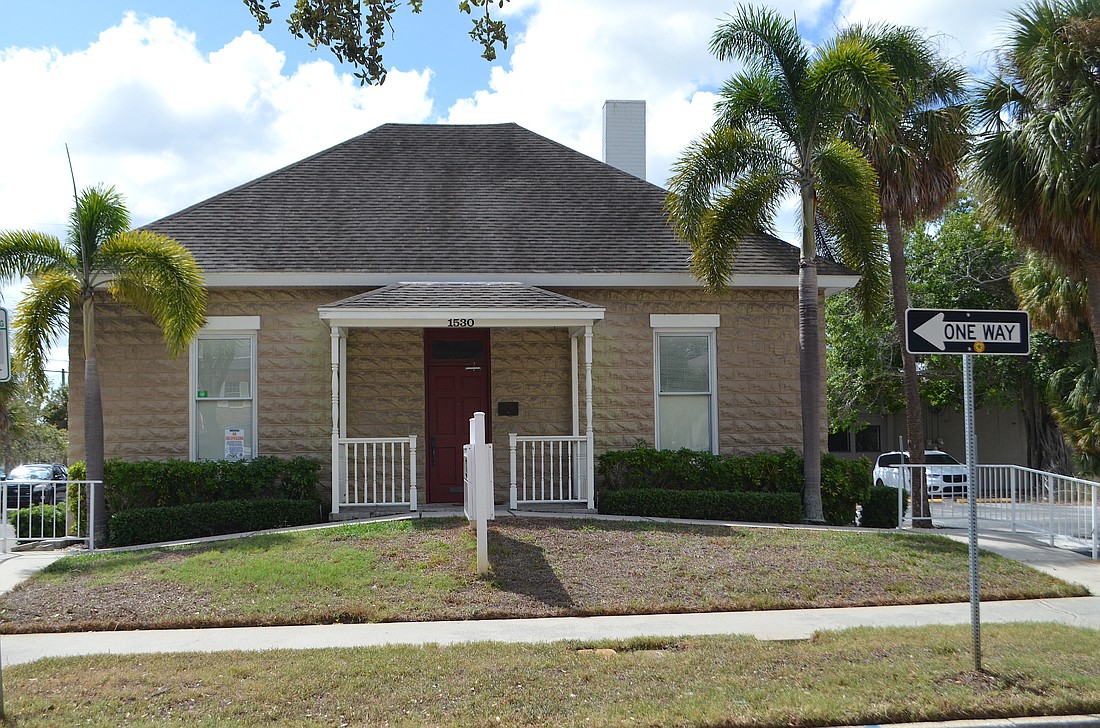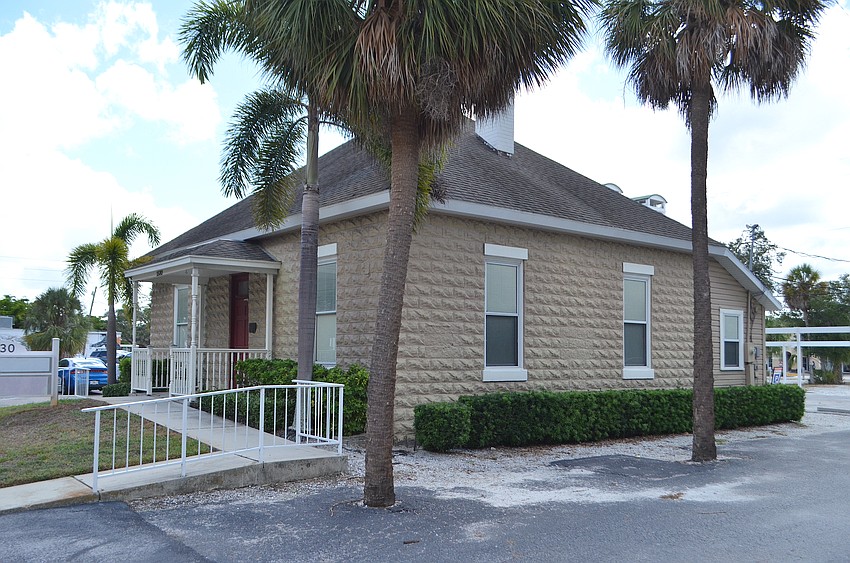- July 13, 2025
-
-
Loading

Loading

A downtown Sarasota development proposal of historic proportions faces a tiny obstacle of historic significance.
With its $32 million acquisition of 3.1 acres, developer Orange Pineapple LLC also bought a small historic house at 1530 Cross St. near Burns Court, the house built in 1912 by George McAlpin, one of the city’s founding fathers.
So far the developer has been unable to identify a site to move the house to and has found no willing recipient to accept it, attorney Patrick Seidensticker told city commissioners at their Oct. 3 meeting. Appealing a denial by the Historic Preservation Board to demolish the building is a last-ditch option.
Commissioners unanimously voted to table the matter until their second meeting in March 2024, if not sooner.

The significance of the McAlpin House is two-fold.
First, George McAlpin partnered with Owen Burns to start a construction company that laid miles of concrete as Sarasota began to develop in the early 1900s. Second, the home’s exterior is made of rusticated concrete blocks that McAlpin designed himself. What makes them unique, Seidensticker said, is their size. Otherwise, such blocks are still produced, but smaller in scale.
“Unfortunately, multiple interested parties visited the site with their own consultants and each one determined that the structure was not suited for their needs, and the cost to retrofit the structure for residential use was too great, or their proposed location was not feasible for a move,” Seidensticker said.
He added that the developer will continue its effort to find a recipient for the structure and pay to move it, but was seeking a demolition permit should it be unsuccessful.
Senior Planner Clifford Smith, the city’s staff historic properties expert, said the blocks created by McAlpin that make up the facade of the small structure, which was expanded to the rear over the years, are significant.

“He actually created them and he created the molds,” Smith said. “There are actually very few of those rusticated block houses in the city. The house is eligible for national (historic) designation, and the house was built in 1912. That’s 111 years ago. At that time this was the town of Sarasota in Manatee County. This building predates the city of Sarasota and it predates Sarasota County. The historic significance of this building is listed under five different historical categories that it's eligible for, and none of these has changed."
Vice Mayor Liz Alpert pointed out that the prior owner of the property, Capstone Group Holdings, had secured permission to move the structure about 100 feet to the former site of Nancy’s Bar-B-Q at the corner of South Pineapple Avenue and Cross Street. She asked Seidensticker why the Orange Pineapple didn’t consider that option.
“I don't represent the previous developers, but for whatever reason, their development did not come to fruition,” he said. ”My clients intend to use the Nancy's space for a larger development, so it's no longer available for the move.”
Seidensticker insisted demolition is not the developer’s first choice.
“I would stress the fact that the applicant is ready, willing and able to provide the structure and to move this structure if a capable private citizen or public entity comes forth with a place to move it to,” he said.
The entire development property is zoned Downtown Core, which permits construction of up to 10 stories high and a residential density of 50 units per acre. Orange Pineapple is planning a mixed-use redevelopment there in the triangular area bound by South Pineapple Avenue, South Orange Avenue and Ringling Boulevard. Cross Street bisects the site near the northern end.
Commissioner Erik Arroyo suggested other than the building materials and who built it, the structure is not architecturally unique, has been vacant for some time and creates a void in an area ripe for redevelopment.
“It seems like we love historic preservation, but nobody's stepping up to get this property literally for free,” he said. “Nobody's stepping up to rent this property, there are no tenants, there is no viability, and we're balancing historic preservation with walkability and new urbanism.
“I wonder if we should be placing some consideration into the individuals that paid $32 million for this property and want to create first-floor commercial walkability and spur economic activity in that part of town,” he continued. “Or are we saying let's keep it the way it is without a tenant, and it's going to just going to be a dead zone.”

Before making her motion to continue the hearing, Vice Mayor Liz Alpert shared Arroyo’s lament that no historic preservation enthusiasts have expressed a willingness to accept the structure, but added it is historically significant and should be preserved.
Tabling the matter until the commission’s Jan. 2, 2024 meeting, she said, will give the developer more time to find a recipient and may provide an opportunity to incorporate the structure into the future project.
“I think it looks like a really great project that will be an exciting addition to the city,” Alpert said. “I'd love to see if there can be some consideration for really trying hard to do that, or a public-private partnership or have somebody in the historic preservation community step up, and come forward.”
Correction: This story was updated to correct the date of continuation of the item before the City Commission.